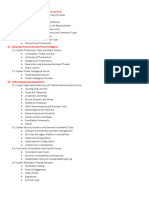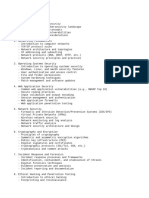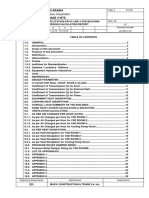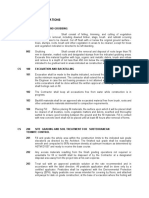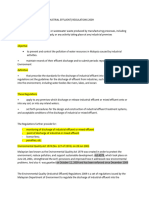0% found this document useful (0 votes)
26 views6 pagesCybersecurity Notes
The document provides study notes on various cybersecurity topics, including the evaluation of operating systems, network traffic analysis, and malware knowledge. It emphasizes the importance of understanding security frameworks, incident response, and secure coding practices. Each section includes explanations and examples to illustrate key concepts in cybersecurity.
Uploaded by
vineethCopyright
© © All Rights Reserved
We take content rights seriously. If you suspect this is your content, claim it here.
Available Formats
Download as PDF, TXT or read online on Scribd
0% found this document useful (0 votes)
26 views6 pagesCybersecurity Notes
The document provides study notes on various cybersecurity topics, including the evaluation of operating systems, network traffic analysis, and malware knowledge. It emphasizes the importance of understanding security frameworks, incident response, and secure coding practices. Each section includes explanations and examples to illustrate key concepts in cybersecurity.
Uploaded by
vineethCopyright
© © All Rights Reserved
We take content rights seriously. If you suspect this is your content, claim it here.
Available Formats
Download as PDF, TXT or read online on Scribd
/ 6
















